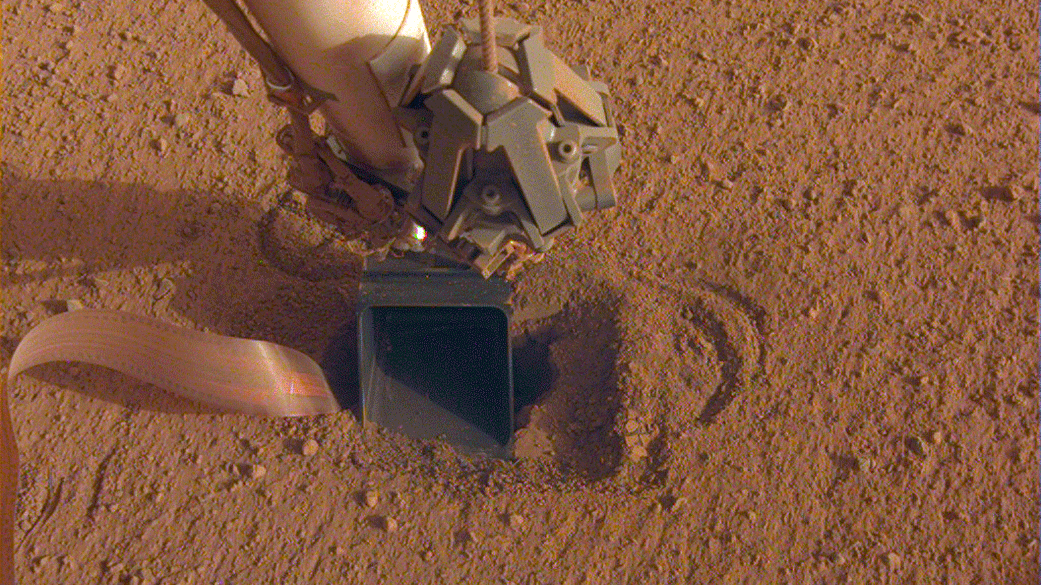Fox News Flash top headlines for July 8
Fox News Flash top headlines are here. Check out what's clicking on Foxnews.com.
Like your next-door neighbor, NASA also has a "mole" problem — but this one is on Mars.
NASA's InSight lander, which landed on the Red Planet in 2018 and has shown off stunning images and heard the first-ever evidence of "marsquakes," is having trouble with the heat probe, known as a "mole," which is located at the end of the lander's robotic arm, the space agency said on Tuesday.
"It's mostly buried now, thanks to recent efforts to push down on the mole with the scoop on the end of the robotic arm," NASA wrote in an update. "But whether it will be able to dig deep enough – at least 10 feet (3 meters) – to get an accurate temperature reading of the planet remains to be seen. Images taken by InSight during a Saturday, June 20, hammering session show bits of soil jostling within the scoop — possible evidence that the mole had begun bouncing in place, knocking the bottom of the scoop."

The movement of sand grains in the scoop on the end of NASA InSight's robotic arm suggests that the spacecraft's self-hammering "mole," which is in the soil beneath the scoop, had begun tapping the bottom of the scoop while hammering on June 20, 2020. Credit: NASA/JPL-Caltech
BEFORE MARS, ASTRONAUTS SHOULD SWING BY VENUS, EXPERTS BELIEVE
NASA continued: "While the campaign to save the mole continues, the arm will be used to help carry out other science and engineering work."
The mole needs friction from the soil to dig itself further, but it hasn't been able to get past the "cement-like duricrust" on Mars, so it just bounces in place.
The space agency said the next moves for the InSight team could be to provide the friction "by scraping or chopping nearby soil to move it into the pit it's in."
Despite the inability to use the mole (part of an instrument called the Heat Flow and Physical Properties Package), the InSight lander has made several discoveries since landing safely on the Red Planet in November 2018 after "seven minutes of terror."
Costing $828 million, the InSight lander was the space agency’s first probe to reach the Red Planet in six years, following the August 2012 landing of the Curiosity Rover.
The InSight (Interior Exploration using Seismic Investigations, Geodesy and Heat Transport) mission, which is managed by NASA’s Jet Propulsion Laboratory, will provide scientists with a wealth of data. “The landing will kick off a two-year mission in which InSight will become the first spacecraft to study Mars' deep interior,” explained NASA, on its website. “Its data also will help scientists understand the formation of all rocky worlds, including our own.”
NASA’S MARS 2020 PERSEVERANCE ROVER: WHAT YOU NEED TO KNOW
The lander had originally been scheduled to blast off in March 2016, but NASA suspended its launch preparations when a vacuum leak was found in the craft’s prime science instrument.
In September 2019, the InSight lander detected bizarre bursts of magnetic pulses on Mars that raised "interesting questions."
NASA is also slated to send the Perseverance rover to Mars "no earlier than July 30," after several mechanical issues caused delays.
NASA’s long-term goal is to send a manned mission to Mars in the 2030s.